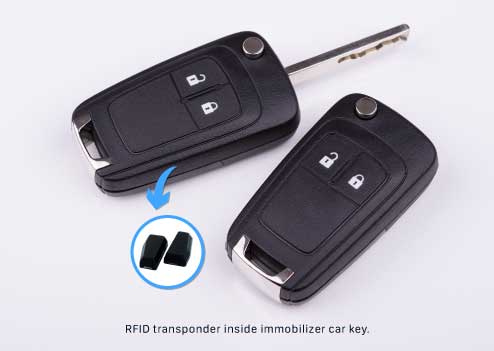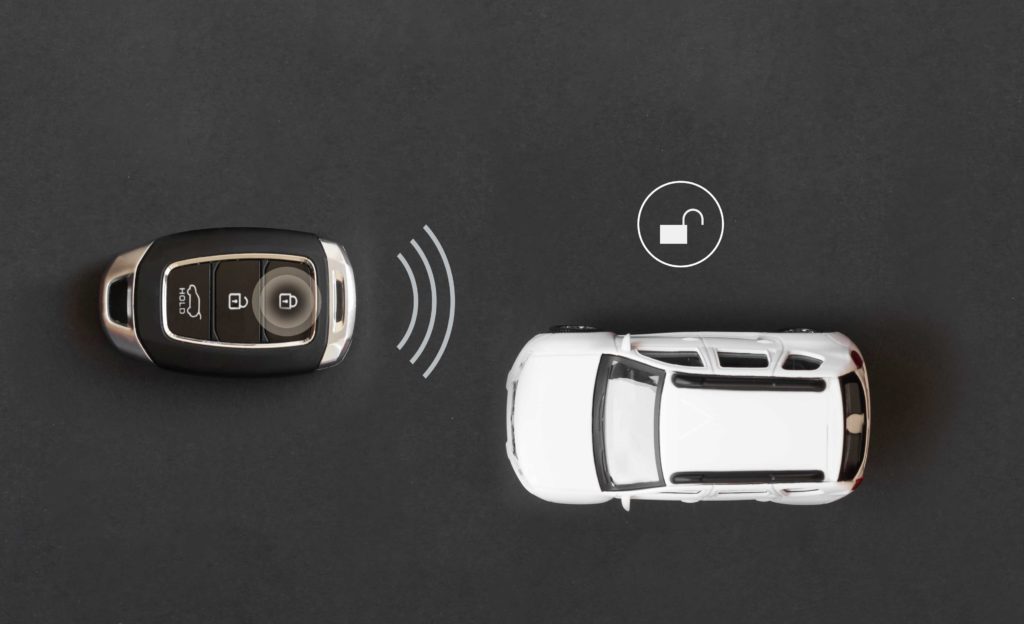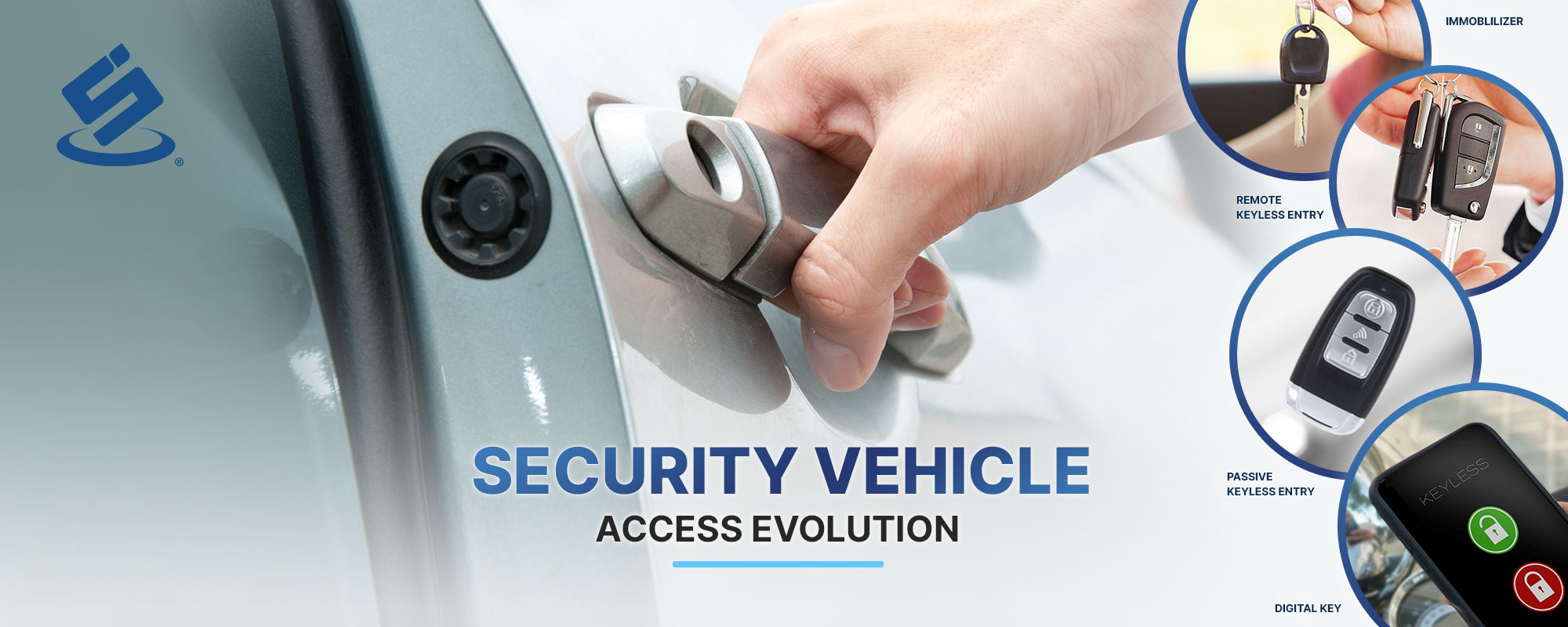Security Vehicle Access Evolution
Security vehicle access has come a long way since the days of simple mechanical locks and keys. Nowadays there are many advanced technologies available that provide enhanced security and convenience for vehicle access. This article focuses on the evolution of security vehicle access and some of the technologies which are currently in use.
In the early days of automotive transportation, vehicles were secured using mechanical locks and keys. These systems were inconvenient for car owners and offered limited security. Car thieves can easily bypass the lock mechanism and steal the intended car.
As vehicle technology advanced, so did the security measures used to protect them. In the last few decades, there has been significant progress in enhancing the safety and convenience features of vehicles. Immobilizers, remote keyless entry (RKE), passive keyless entry (PKE) and digital keys are among the most important technologies that have played a critical role in enhancing the security and convenience of modern vehicles.
The Emergences of Immobilizers
Before immobilizers, vehicle theft was a rampant issue due to the ease of hot-wiring or duplicating mechanical keys. Immobilizers were designed to curb these thefts by using a unique electronic code embedded in the vehicle’s key. The first immobilizer system was introduced in 1991 by Renault, a French automaker, in response to rising car theft rates in Europe. The system, called the Renault Anti-Intruder Device (RAID), used a coded keycard to prevent the engine from starting without a valid key. The RAID system was successful in reducing car theft rates, and as a result, was adopted by other European automakers.
What is an Immobilizer?
The immobilizer is an electronic security system that prevents the engine from starting without a valid key or key fob. This technology works by communicating with the engine control unit (ECU) to disable the fuel injection system or the ignition system if an unauthorized key is detected. Immobilizers are designed to prevent car theft and are mandated as a requirement in many countries.

Immobilizer’s work
Because of its inception, immobilizer technology has evolved significantly to become a modern immobilizer. Not only encrypted transponders, primarily utilizing low-frequency RFID technology and rolling codes that change every time the key or key fob are used in immobilizer nowadays to prevent hacking attempts, but also some immobilizers incorporate features such as GPS tracking and remote disabling, which allow the vehicle to be tracked and remotely disabled in case of theft.

RFID transponder
The Advent of Remote Keyless Entry
Remote keyless entry (RKE) revolutionized automobile security by allowing drivers to lock and unlock their cars without using a physical key. The first RKE system was introduced by Ford in 1989. The system used a small keypad mounted on the driver’s door to enter a code, which would unlock the doors and disarm the alarm. RKE systems have since evolved and now use a remote-control fob that communicates with the vehicle’s onboard computer through radio frequencies or infrared signals.
RKE is a feature that allows the driver to unlock the vehicle’s doors remotely without using a key or key fob. The driver can also open the trunk and activate the panic alarm with the RKE fob. RKE technology has become a standard feature in most modern vehicles and has evolved to incorporate more advanced security features such as rolling codes that change every time the fob is used to prevent unauthorized access.
RKE systems have also become more sophisticated, incorporating additional features such as remote start, which allows the driver to start the engine from a distance, and proximity sensors that detect when the driver is approaching the vehicle and unlock the doors automatically.
The convenience of RKE systems was highly appreciated by drivers, but there were still some limitations. The primary concern was the vulnerability of RF signals to interception or jamming. Additionally, the remote control had to be within a certain range of the vehicle, and the driver still needed to insert the key into the ignition to start the engine.

RKE
The Rise of Passive Keyless Entry
To address the limitations of RKE systems, the automotive industry introduced passive keyless entry (PKE) systems. PKE systems provide a higher level of convenience and security by allowing drivers to unlock and start their vehicles without physically interacting with a key or fob.
PKE systems were introduced in the late 1990s and early 2000s. PKE systems differ from RKE systems in that they automatically unlock the doors when the driver is near the vehicle. PKE systems use a combination of radio frequencies and sensors to detect the presence of the key fob.
PKE technology has become increasingly popular in modern vehicles as it offers convenience to the driver by allowing them to enter the vehicle without having to take the key fob out of their pocket or purse. PKE systems are also more secure than traditional keyless entry systems as they use encrypted signals that are difficult to hack.
Some PKE systems also incorporate features such as the automatic seat and mirror adjustment, which adjust to the driver’s preferences automatically as soon as they enter the vehicle.
Although PKE systems provide enhanced convenience and security, they are not without drawbacks. Signal relay attacks, where criminals use signal amplifiers to trick the vehicle into thinking the key fob is nearby, have emerged as a security concern. Moreover, PKE systems still rely on physical key fobs, which can be lost or damaged.

PKE
The Era of Digital Keys
To further improve security and convenience, the automotive industry is now embracing digital key technology to replace traditional key fobs by using smartphone app, utilizing the phone’s secure elements and wireless communication protocols, such as Bluetooth Low Energy (BLE) and Near Field Communication (NFC).
The first digital key was introduced in 2017 by Volvo Cars. The system, called “Volvo On Call”, allowed Volvo car owners to lock, unlock and start their cars remotely using a smartphone app. This technology was soon adopted by other automakers, and today, digital keys are becoming increasingly common in modern vehicles.
As digital keys continue to gain popularity, we can expect to see further advancements in this technology. One area of development is the integration of digital keys with other smart devices such as smart homes and wearable technology. For example, a driver could use their smartwatch to unlock and start their vehicle, eliminating the need for a smartphone.
Another area of development is the use of digital keys for ride-sharing services. With a digital key, the driver could share access to their vehicle with passengers, allowing them to unlock and start the vehicle using their smartphone. Additionally, digital keys could be used to track the location and usage of the vehicle, ensuring that it is being used for its intended purpose.
Digital keys are the latest evolution in automotive security and convenience features. They allow the driver to access the vehicle and start the engine by smartphone or other mobile devices. Digital keys use advanced encryption technology to communicate with the vehicle’s onboard computer and can be programmed with specific security features to prevent unauthorized access or limit the vehicle’s functionality.

Digital Key
What’s Next?
Because of evolution, more advanced technologies are likely to emerge soon. As vehicles become increasingly connected and integrated with the Internet of Things (IoT), biometric authentication methods, such as facial recognition or fingerprint scanning, could become the new norm. Additionally, advancements in blockchain technology and machine learning algorithms may offer more secure and sophisticated access control systems that are less vulnerable to hacking or spoofing. Ultimately, the goal remains to provide vehicle owners with enhanced security, greater convenience, and a seamless user experience, as we continue to redefine the way we interact with and access our automobiles.
Secure Your Future with SIC
For over 10 years, SIC has been supplying immobilizer transponders to both OEM and automotive aftermarket. SIC is committed to leading the way with cutting-edge solutions, and a diverse portfolio of innovative security products tailored to your needs. Our technology covers a wide range of mobility options, from micro-mobility scooters to four-wheeled road vehicles. We offer customized immobilizer transponders qualified AEC-Q100 (SIC61AU), proprietary Keyless Entry Solutions, and power-efficient 13.56MHz RFID readers that support automotive Digital Key application RE31 and RA12.












